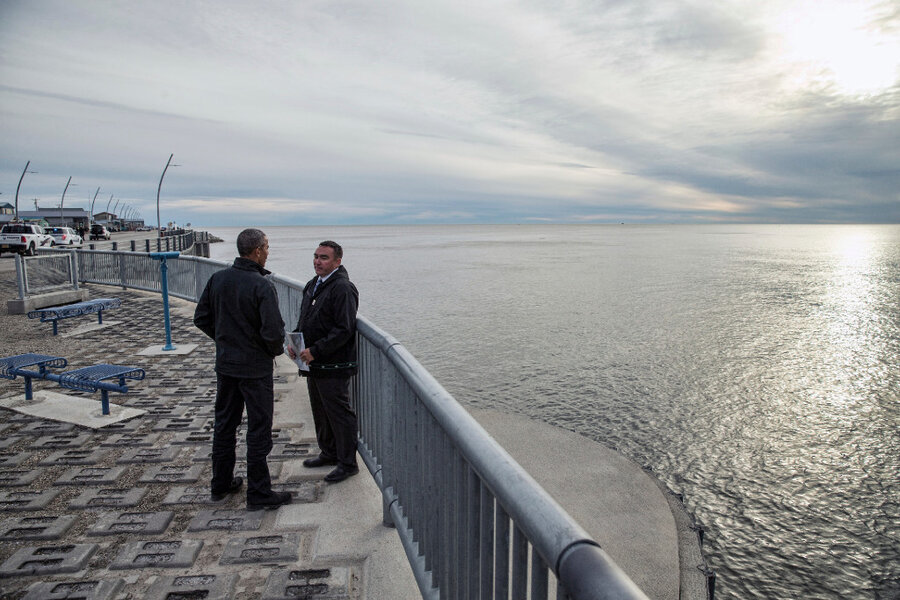Obama designates 'resilience area' to protect Bering Sea ecosystem
Loading...
President Obama signed an executive order on Friday designating 112,300 square miles from the Bering Strait to north of Bristol Bay a "climate resilience area" after consulting with Native Alaskan tribes who rely on the maritime ecosystem for subsistence living.
The Bering Sea Elders Group and Kawerak Inc., a non-profit that provides social services to Alaska Native Villages, had asked Obama to give indigenous Alaskans more of a voice in managing the natural resources they depend on. In response, the new executive order requires that federal authorities consult the Alaskan tribes, 39 other coastal communities, and state officials before making any changes - expansion of commercial fishing - in the use of to the protected area.
“It is the Native elders’ vision that the northern Bering Sea and the resources that our people rely on be protected because they are the foundation of our culture and way of life,” Harry Lincoln, a Yupik elder from Tununak, and the chairman of the Bering Sea Elders Group, told the Associated Press.
The area covers a major migration point for bowhead and beluga whales, Pacific walrus, ice seals and a wide variety of migratory birds. But as climate change causes the amount of sea ice to decrease – forming later in the winter before melting sooner in the spring – migration patterns have changed and made the food supply for many Alaskan Natives uncertain.
Loss of sea ice also has opened opportunities for expanded cargo traffic, offshore petroleum drilling, tourism and other commercial activities, changes that that villages may not welcome and that could affect the security of their traditional food from the sea. The effects are amplified when shipping companies, taking advantage of the lack of sea ice, run more routes through the Bering Sea, further disrupting migration and the Alaskan Natives’ way of life.
There is a long history of the federal government not consulting with native people on land use issues and environmental policy, as seen most recently by Standing Rock Sioux Tribe’s three-month long protest over the path of the Dakota Access Pipeline.
The executive director of the Native Village of Kwigillingok Fred Philip told the Associated Press that Obama is the first president to require native people’s traditional knowledge to be applied to federal land management, saying “this is real progress.”
The presidential order also protects 40,300 square miles of the Norton Basin, as well as the area around St. Matthew Island, from federal petroleum leasing. Both areas are considered important for subsistence marine mammal hunting. This comes on the heels of a five-year ban on new exploration for oil and natural gas in Arctic waters that Obama enacted last month.
The White House announcement came the same day as the Trump transition team said Rep. Cathy McMorris Rodgers (R ) of Wash., would be nominated for Secretary of the Interior. Representative Rodgers has been an advocate of energy production on federal property. The Trump administration may try to overturn Obama's designation.
Alaska Gov. Bill Walker and Lt. Gov. Byron Mallott have expressed concern that the new resilience area" could restrict resource development at a time while when the state is suffering the effects of low oil prices. US. Sen. Lisa Murkowski, (R) of Alaska, said she is concerned about the term “climate resilience area” itself.
“To me, this sure sounds like a euphemism for a marine monument, because it locks up over 112,000 square miles of Alaska waters and seems destined to impact a wide range of communities, tribes, and industries in our state,” Senator Murkowski said in a statement. “While I strongly support meaningful consultation with tribes, this opens the door to a whole host of unknowns, and could easily be misapplied to block even the most responsible Arctic subsistence, activities, and development.”
This report contains material from the Associated Press






